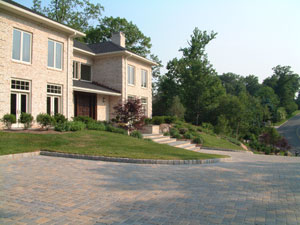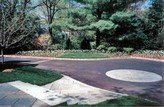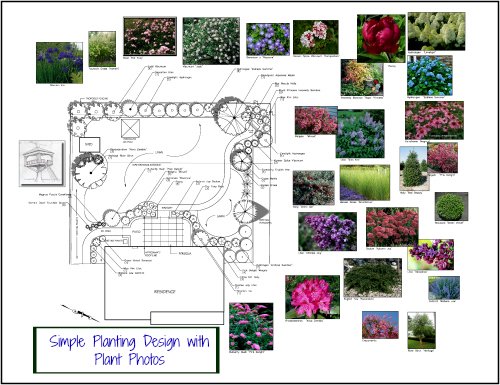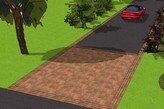Driveway Drainage - Challenges and Solutions
Driveway drainage solutions can be achieved in various ways,
depending on the terrain of your property and how your driveway is
designed. You may use a trench drains, french drains (perforated pipe),
drainage swales, or just creative grading.
All water should always
be directed away from the house if possible, and this includes
correctly grading the driveway. Sometimes, however, this just can't be
done by grading, so other options must be used. No matter how you do it,
water should never be allowed to flow towards your residence, including
your garage.
Directing Water Away from the Garage
Grade your driveway away from the house, if you can. A two percent pitch is a good number to aim for. This means that it will be graded at 1/4" per foot.

As an example, the elevation at the garage floor will be 1" higher than the elevation four feet away.
The grade can be as high as five percent if necessary. The grade of the area outside of the garage is more important than the rest of the driveway, since the car is pulling in and out of the garage. This is often an area for parking, where a relatively level area is more comfortable than parking on a slope.
The balance of the driveway
can have a grade ranging from two percent up to as high as twelve
percent. Obviously, the more level you can make the driveway, the
better, but this is not always possible.
Sometimes driveways have a cross pitch to them so that water does not
run directly down the driveway. In these situations, the driveway is
graded so that it flows down the driveway towards the street and also
crosses the driveway. This creates a diagonal pitch.
There are other grading issues and challenges that might occur with your driveway drainage. Although
it is easier and less expensive to address driveway drainage by grading
the driveway properly, at times drainage pipe is needed.
Land On Either Side Of The Driveway Is Pitched Towards The Driveway
Land on either side of the driveway may be pitched towards the driveway.This may lead too much water to the driveway area. One solution to this situation is to grade the land at the driveway edges away from the driveway. This then meets the land sloping towards the driveway so that a drainage swale can be created. A drainage swale is a pitched channel, typically located in lawn and not very noticeable, which takes water away to a lower location.
My page on lawn drainage shows a picture of what a swale looks like and how it works.
If you don't have the space for a swale, or it is just not a good driveway drainage solution, another alternative is to lay driveway drains
at the driveway edge. Typically perforated pvc pipe is used. Corrugated
pipe with slits in it is another type of drainage pipe that can be
used.
These pipes and methods are similar to french drains that are
installed at house foundation perimeters. The pipe should be pitched to
bring the water to an acceptable location. One such area might be woods.
You can also drain to the street or sewer if your zoning regulations
allow this. The drainage pipe should have filter fabric over it, and a
decorative stone can be placed on top of this fabric.
The Street And The House Are At Similar Elevations
Sometimes it is difficult to get the correct driveway pitch due to a lack of change in elevation from one point to another. These situations are a little tricky and some creative grading must be done, such as an up and down type of affect in a couple of areas.
Grading the driveway to
a mid-point, where all areas are pitched to a central location is
another option, and a driveway drain which visually looks like a grate
is located there.
Solid pipe is then connected to the interior of this
drain, once again leading the water away.
Your Property Slopes Towards The House
In this case, a trench drain can be used where the driveway meets the garage. This is a long, narrow drain inlet, which should be pitched in one direction. It then connects to a solid pipe which, as in the above scenarios, serves to lead water to a lower elevation on your property...one where it is acceptable to have water ending up there.
A trench drain can also be used if a driveway is steeply pitched towards the street. The drain is placed at the end of the driveway right before it joins the road.
Some of
these driveway drainage methods can be used in various situations.
Examples were given to help you see that there are many different
solutions for driveway drainage challenges.
And More Information....
Questions and Answers on Driveway Drainage
Flooding at Front Door
Drainage Problems at Garage
Steep Driveway and Pavers
Using Driveway Trench Drains
If you enjoyed this page, please share it!
Return From Driveway Drainage to Driveway Designs
Landscape Design Advice Home












